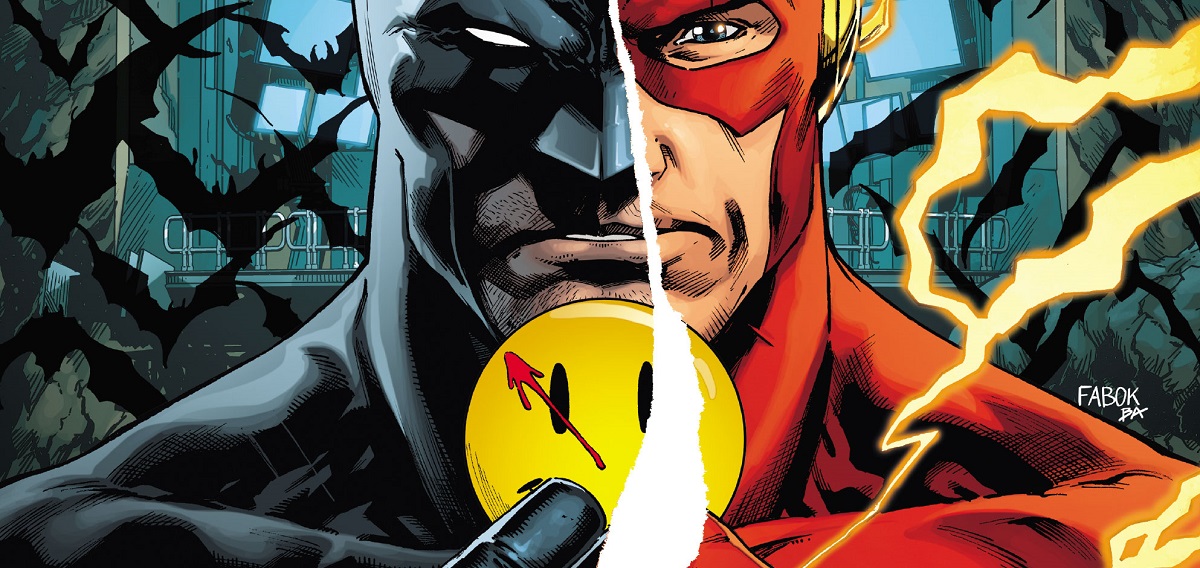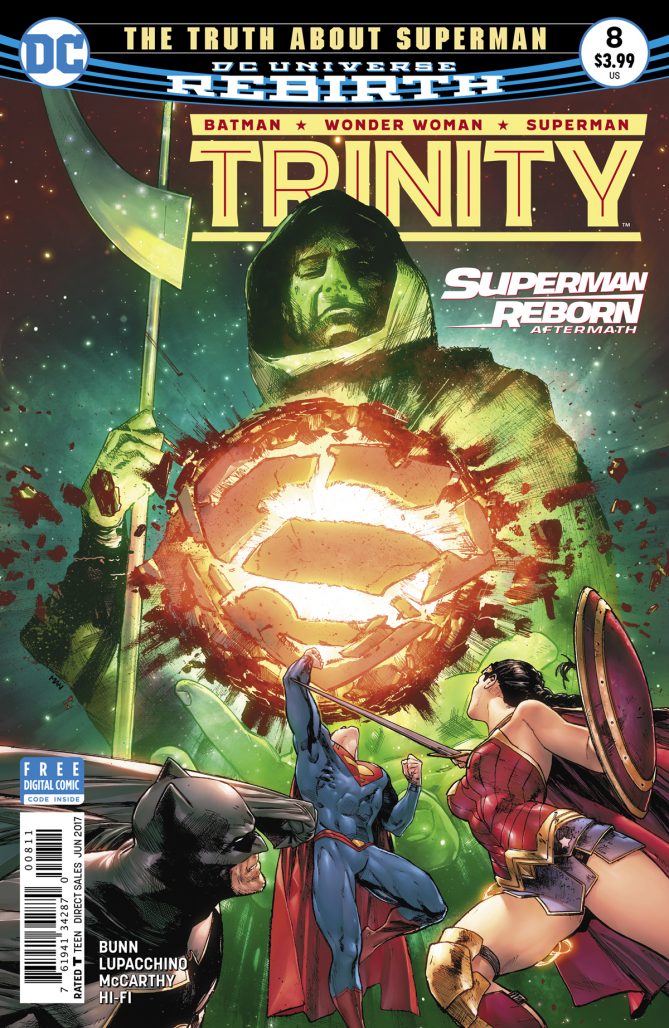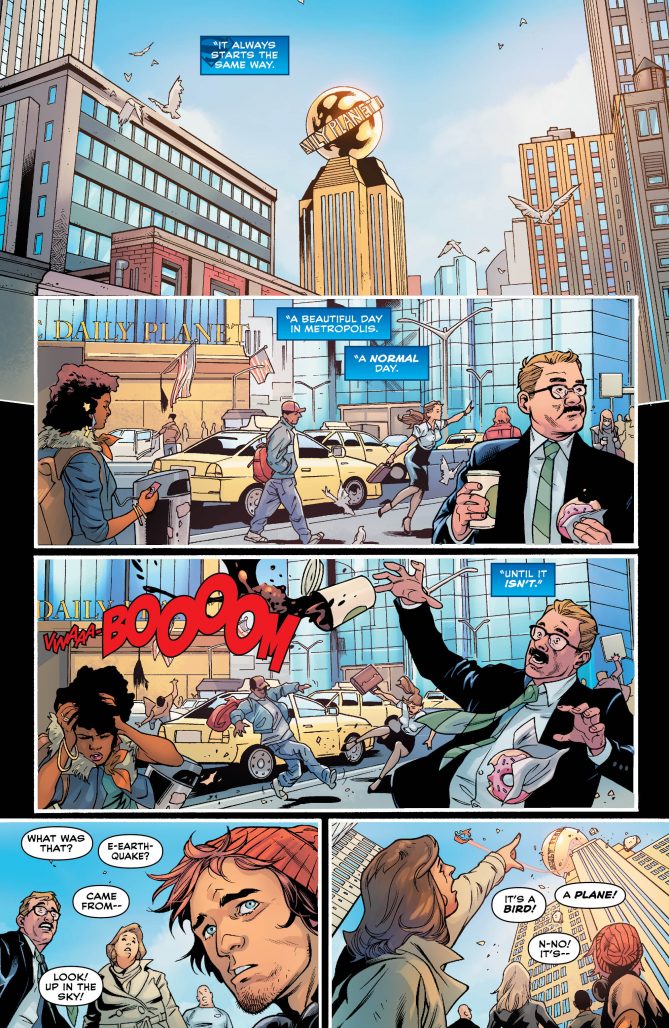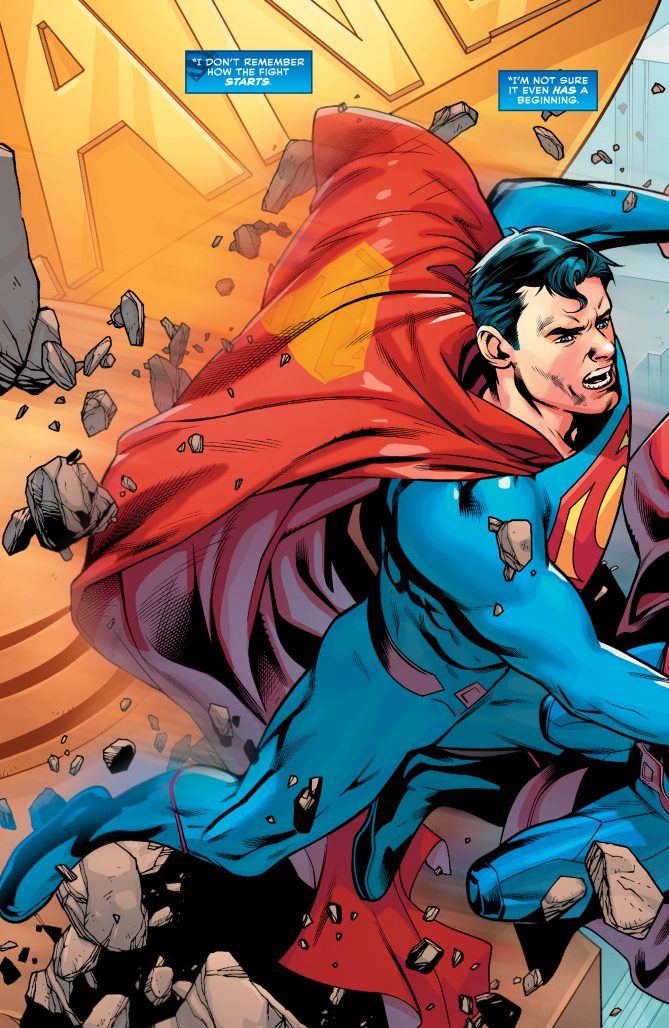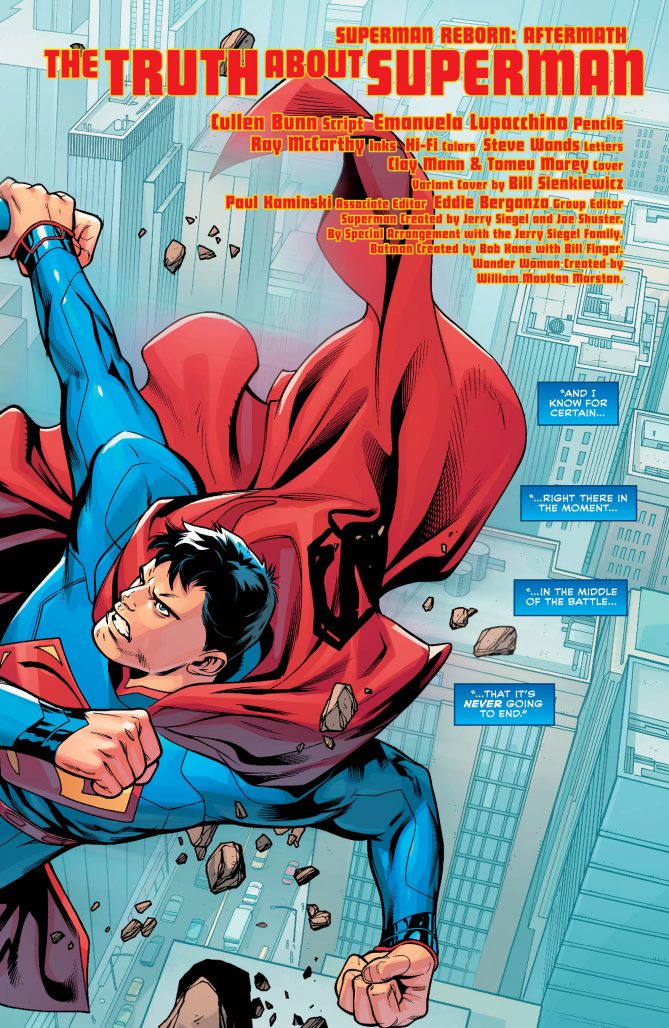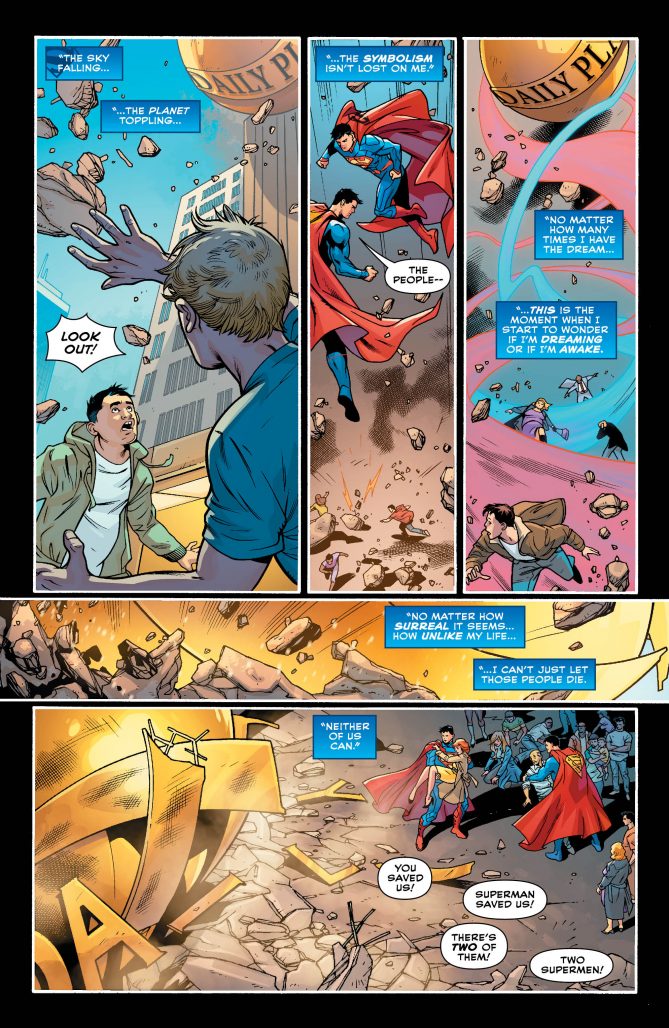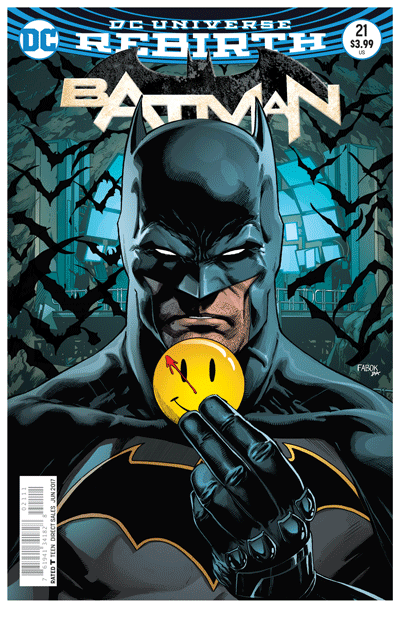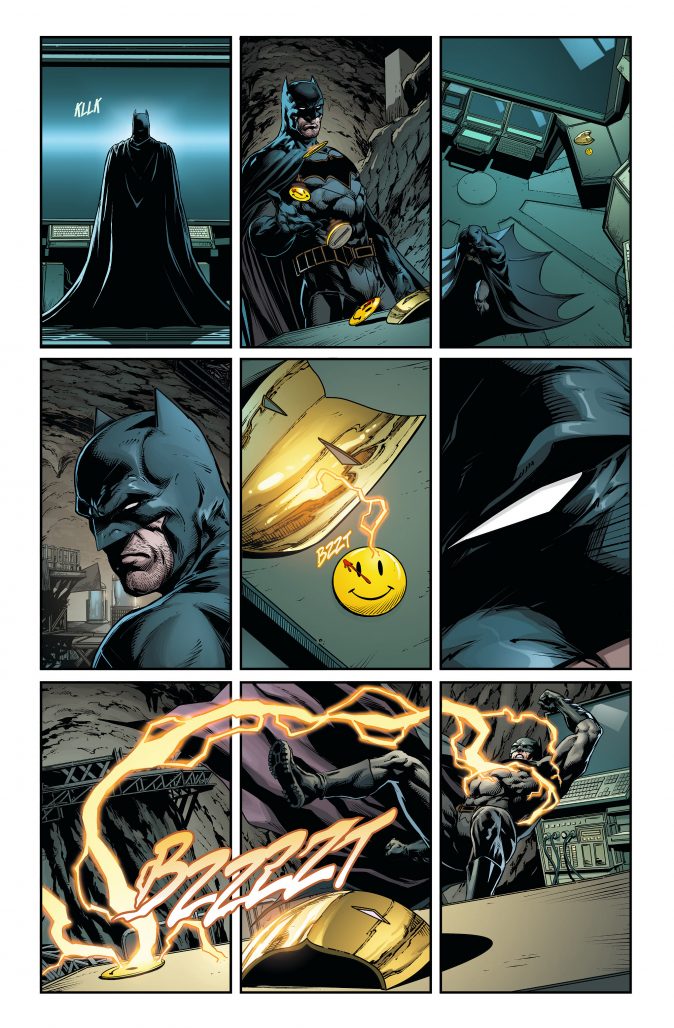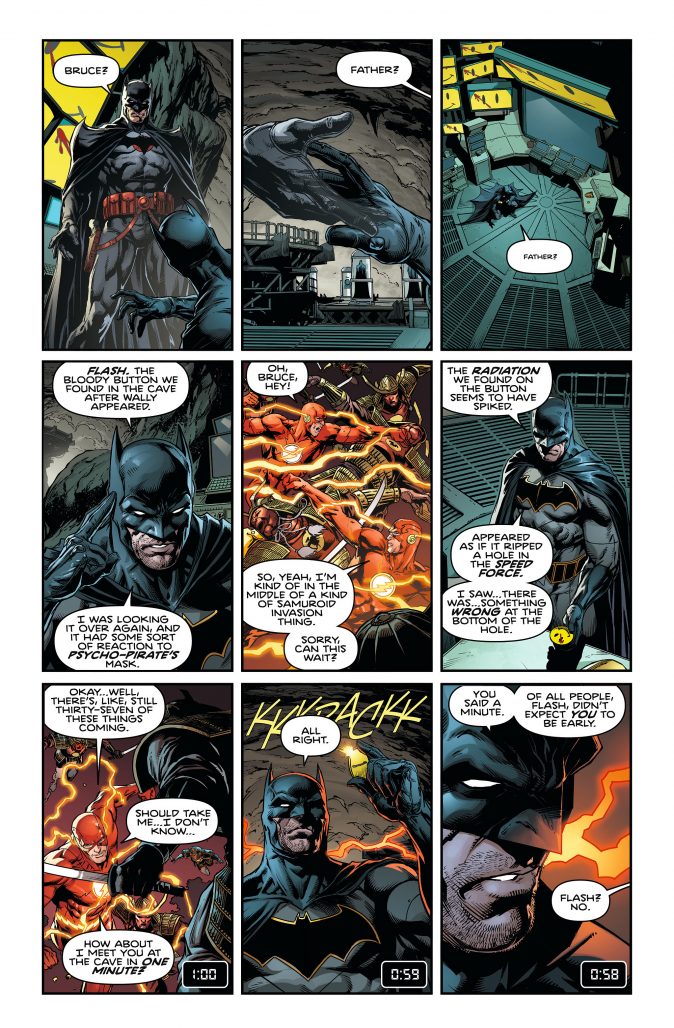In June 2016, DC Comics kicked off the start of its Rebirth initiative. After a wave of criticism surrounding the way they have treated their characters’ rich histories since 2011’s New 52 relaunch, DC has decided to rebrand. They hope that by restoring their characters’ pasts, they will restore readers’ faith in them as well. Do they succeed? That’s what the Comics Beat managing editor Alex Lu and entertainment editor Kyle Pinion are here to discuss. Book by book. Panel by panel.
UPDATE: With a new year comes change. Going forward in 2017, Alex and Kyle will be alternating articles weekly in order to give each other a breather after 7 straight months of going tandem. A little break is always good! Kyle is gallivanting around Italy right now, so Alex is in charge for the next two weeks!
Note: the reviews below contain **spoilers**. If you want a quick, spoiler-free buy/pass recommendation on the comics in question, check out the bottom of the article for our final verdict.
 Trinity #8
Trinity #8
Writer: Cullen Bunn
Penciller: Emanuela Lupacchino
Inker: Ray McCarthy
Colorist: Hi-Fi
Letterer: Steve Wands
In the aftermath of last month’s strange and meta resolution to the Superman problem, the DC Universe has been forever changed. For those who don’t know, the Superman problem is basically that from 2011-2016, DC created a new Clark Kent who was then basically replaced by the old Superman when DC decided to go back to brass tacks during last year’s “Rebirth” event. However, this meant that the last six years of Superman stories had meant nothing and that wasn’t okay with editorial. Thus, following some strange time-line altering and world-warping shenanigans, the old Superman and new Superman have become one person with a unified timeline. Trinity #8 attempts to reconcile what Superman’s newly revised history means for the rest of the DC Universe and ends the same way it begins– with a big old question mark.
The things that I really enjoyed about the early issues of Trinity was that it felt wildly explorative and incredibly character driven. Francis Manapul has a beautifully serene art style and a great sense of what makes Batman, Superman, and Wonder Woman tick both together and individually. The story didn’t need a huge earth-shattering conceit. It was about three enormously strong individuals trying to connect on a fundamental empathetic level.
Perhaps Cullen Bunn just drew the short end of the editorial straw this month, being forced to write an issue of Trinity that functionally serves as a coda to an event that didn’t even run through this series’ pages. There was very little way that this story could be satisfying without fundamentally changing anything about the DC Universe at large. And it’s not. Trinity #8 is an okay comic, but it really doesn’t mean anything to this series or to the DCU at large. Because it can’t.
The backbone of this issue is a dream that Superman has. He’s fighting the New 52 version of himself as Metropolis crumbles around them. It’s a very blunt visual metaphor that is further underlined by the text of the book as Superman relates his dream to Batman and Wonder Woman. In Superman’s dream, he ends up fighting Batman and Superman as well; the battle between the Trinity only stops when Batman and Wonder Woman are confronted with a multiverse full of different versions of themselves. It’s a beautifully rendered but shrug-worthy reveal because the readers already knew about all of this. It’s only news to the characters and there’s no sense of dramatic irony employed for humor or tension.
Artist Emanuela Lupacchino, whom I loved on Starfire and Supergirl: Rebirth, does a solid job of imbuing the content she’s given with exuberance. However, even her work here isn’t quite up to the standards I’m used to seeing her work at. Perhaps its the slightly more house-style way that inker Ray McCarthy works over her pencils, but I found myself wishing for more sharp edges and stylized linework than I found here. As I mentioned before though, the double page spread featuring a multiverse of Trinity members is quite impressive.
The conclusion of this book is the only part I’m particularly pleased with. After Superman manages to convince Batman and Wonder Woman that his dream is a sign that his reality has been manipulated, they decide that they need to keep this a secret from the rest of the Justice League until they know more about what’s going on. This is clearly set up for an internal feud between the big three heroes and their friends. That morality play is interesting to me– much more interesting than Mr. Oz’s appearance as a god in the machine at the end of this issue. I’m tired of Mr. Oz showing up and plotting mysteriously every so often with no other note for his character to work from. He needs to either do something or go back into hiding until he’s really needed for the story to progress.
Ultimately, I can’t recommend Trinity #8. It’s not necessarily a bad comic, but it’s certainly not a necessary one. Save your money for the real Watchmen mystery…
Final Verdict: Pass
 Batman #21
Batman #21
Writer: Tom King
Penciller and Inker: Jason Fabok
Colorist: Brad Anderson
Letterer: Deron Bennett
Back in the 90s, the comic book industry learned all the wrong lessons from Alan Moore’s and Dave Gibbons’ Watchmen. Editorial saw the superficial hypermasculinity and intense usage of sex and violence as a way to make comics “cool” when it really just made them cheesy. The core of Watchmen‘s success came not from its exterior but its thematic and structural interior. It was book with a perspective– one that saw the world in a new yet resonant way and made its argument with a highly structured story that used the comics format in way it rarely had been up until that point. While, even now, many creatives still do not entire understand the reasons behind Watchmen‘s success, if anyone does, it is Omega Men and The Vision writer Tom King. And while it’s far too early to say what DC’s new Watchmen story will amount to, Batman #21 is an incredibly entertaining read that flirts with its progenitor without offending or fundamentally damaging it.
For those of you expecting the answers to your most burning questions about Watchmen‘s involvement in the DC Universe, well, not to be cynical…but what were you thinking? In all seriousness, though, Batman #21 doesn’t tell us much that we didn’t already know. The facts laid out during DC Universe: Rebirth #1 are retold to us here: a mysterious otherworldly force (Dr. Manhattan, in all likelihood), has erased 10 years from the DC Universe’s timeline. One day, Batman stumbles upon a bloody smiley face pin embedded in the Batcave’s wall and enlists the Flash to help investigate the source of the pin and the temporal disturbance.
Then, at the start of this issue, Batman places the pin next to Psycho Pirate’s mask and after a violent reaction, Bruce sees his father, Thomas Wayne, donning the Batman mantle. Shaken, Batman calls the Flash in. Suddenly, the Reverse Flash appears in the Batcave. What follows is an all-out slugfest between Batman and the other fastest man alive. And that’s basically it. There’s no resolution to the Watchmen plot. There’s barely even a hint of it until the end of the story, when the Reverse Flash suddenly gets pulled back out of Batman’s Earth and gets shot back in in a burst of blue, withered and dying.
So if this issue is so plot-light and unfulfilling in a certain sense, why do I love it so much? Well, honestly, it’s simply a matter of execution. Tom King and artist Jason Fabok are at the top of their games here. King, who used the nine panel grid structure to great effect during The Omega Men, does so again here. Batman’s fight with the Reverse Flash takes place over a single minute rendered across eight pages. The action is broken down meticulously moment by moment. Fabok takes advantage of the nine panel grid’s limited amount of horizontal space in order to have us focus in on every individual punch and gritty blood-spattered facial expression. The fight sequence pays brutal homage the one between the Comedian and Ozymandias that sets off the events of Watchmen. A small timer placed in the bottom right of each panel of the fight, counting down from sixty, echoes the Doomsday Clock that moved throughout Moore’s and Gibbon’s series. In a particularly nice touch, the Reverse Flash often takes multiple actions across multiple panels during a single second.
Fabok’s inks are quite heavy throughout this issue, so it’s to colorist Brad Anderson’s credit that in spite of the linework’s ability to tell a complete story on their own, the colors in this book add so much. Anderson knows how strong Fabok’s inks are and allows them to do the legwork of defining shape and form. He uses color instead to enhance mood and lighting. Best of all, in a particularly powerful touch, Anderson limits the palette of this book to primarily reds, yellows, and blacks. Whether it’s the Watchmen button or the Reverse Flash’s suit or a battered and bleeding Batman, these colors stand out brightly against a secondary palette of cooler shades that only serve to enhance the presence of those primary characters and symbols.
Batman #21 is one of the coolest DC comics in recent memory. An excellent usage of structure and color combine to create an incredibly compelling action story that leaves you wanting more. And more (or should I say Moore?) is coming. Let’s hope it’s as good as this.
Final Verdict: Buy
Round-Up
- Batwoman #2 continues the story of Kate Kane’s return to Coryana, an island that she spent a “lost year” on and fell in love with a dangerous and mysterious woman named Safiyah. It’s a deftly executed storyline that features writers Marguerite Bennett and James Tynion IV as well as artist Steve Epting and colorist Jeromy Cox at the top of their games. When I reviewed the first issue, I was pretty harsh on it because it wasn’t a particularly bombastic re-introduction to Kate’s character, but I think there’s something to be admired in the book’s quiet consistency. It’s clear that Tynion and Bennett have a long term plan for Kate and they’re only just laying the first brick for their hopefully grand monument. It’s a solid brick and while it may not be much of a blockbuster, it’s certainly solid entertainment for those who already enjoy Kate’s character to some extent.
- Super Sons #3 is another continuation out this week. This one focuses on Damian Wayne’s and Jon Kent’s attempt to save a young girl who is being held captive by her brother; he’s been corrupted by Amazo powers. While Peter Tomasi’s writing here isn’t anything profound, his dialogue is certainly fun to read and Jorge Jimenez’s art is always a joy to look at. It remains a fine pickup for the all-ages crowd.
Miss any of our earlier reviews? Check out our full archive!


